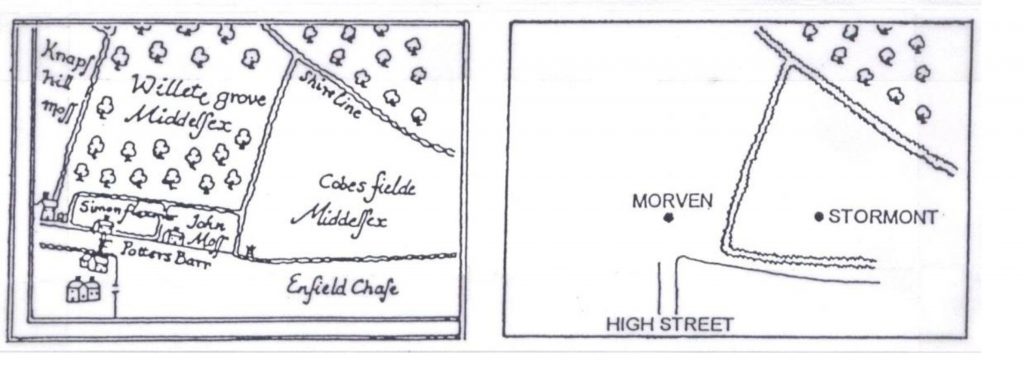FACT SHEET No. 1
THE ORIGIN OF THE NAME ‘POTTERS BAR’
The earliest known reference to Potters Bar was in 1387, when it appeared as ‘Potterbare’. The spelling remained fairly constant from Potters Barr to Potters Bar from the 1500’s; prior to this it was recorded in 1453 and 1470 as Potters barre.
Most of Potters Bar is situated on London Clay and there was a 1st century Roman kiln uncovered in an excavation in Parkfield in 1953-54. There are pieces of Roman tiles and pottery from this period on display in the Museum. No proof exists that there was a pottery kiln in medieval times, but it seems likely.
In 1649, mention is made of Chris Thompson, a brick and tile maker, who held a house with half-an-acre of the Chase enclosed (now Salisbury Close – Journal No.7). As late as the Tithe map of South Mimms, 1842, there were fields called Brick Field and Brick Kiln Field.
It is possible that the name might have come from Geoffrey le Pottere, who was living in the parish of South Mimms in 1294.
The presumed original bar is shown on a map of 1594 (Guildhall Library Map Case 66) and was reproduced by permission of the Brewers Company and the Guildhall Library by Helen M Baker in 1978. The part illustrating the bar is shown below:-
The bar was on a line of the road from the Causeway to Quakers Lane, in the grounds of the Morven estate, and was similar to other bars in North Mymms, e.g. Bell Bar, Swanley Bar, Nevylesbarre and Sternesbarre (the latter two both in the 1460’s). Such bars seem to represent a point where the main road entered the parkland of a great estate, or crossed from one estate into another. In the case of Potters Bar, the estate was probably Enfield Chase; though it was not one of the gates of the Chase, the road led to the Chase.
The bar was certainly not a turnpike gate. It existed before the earliest turnpike gate (e.g. Wadesmill, Herts. in 1663). The earliest turnpike gate in the Potters Bar area was erected in 1730, at Little Heath. It was moved, in 1804, to the junction of the High Street and the newly-made section of the Hatfield Road, where it remained until the late Nineteenth Century.
Brian Warren 1999
